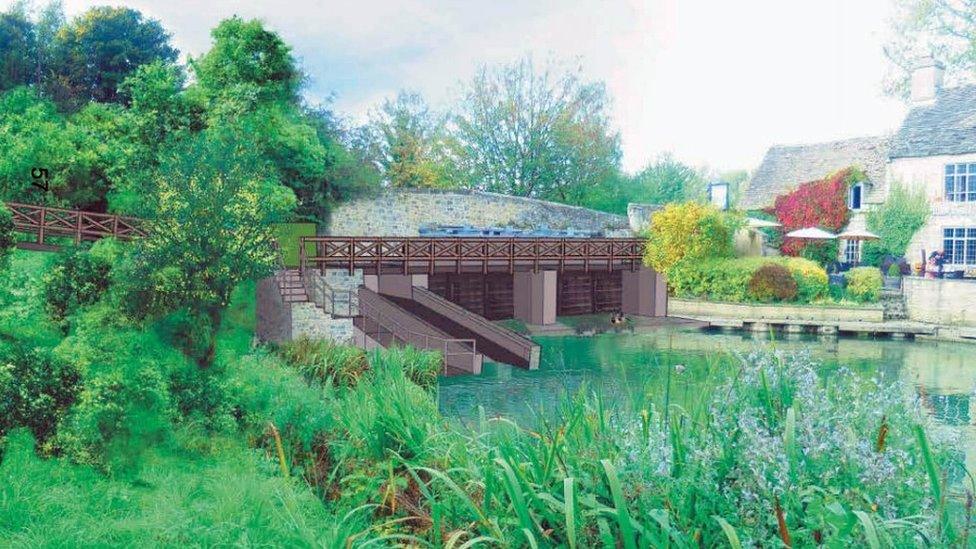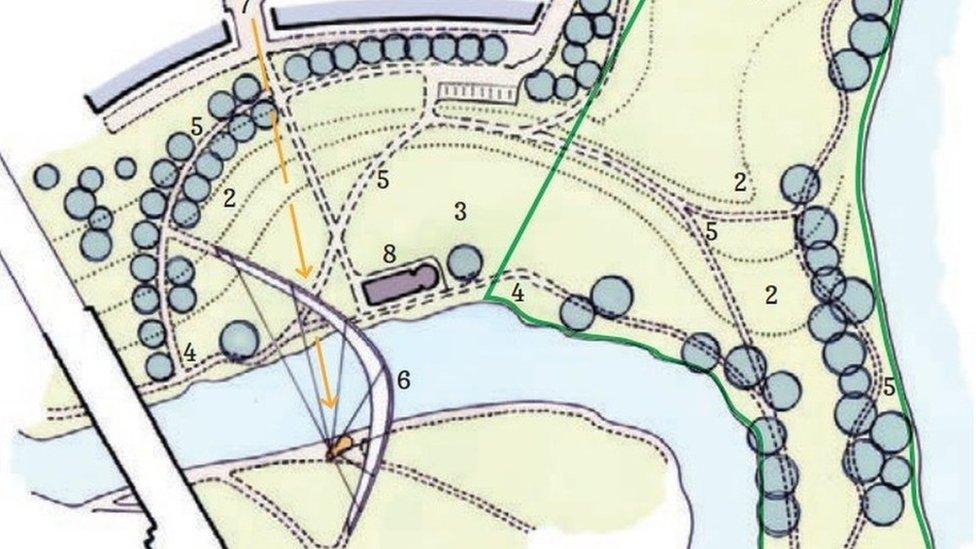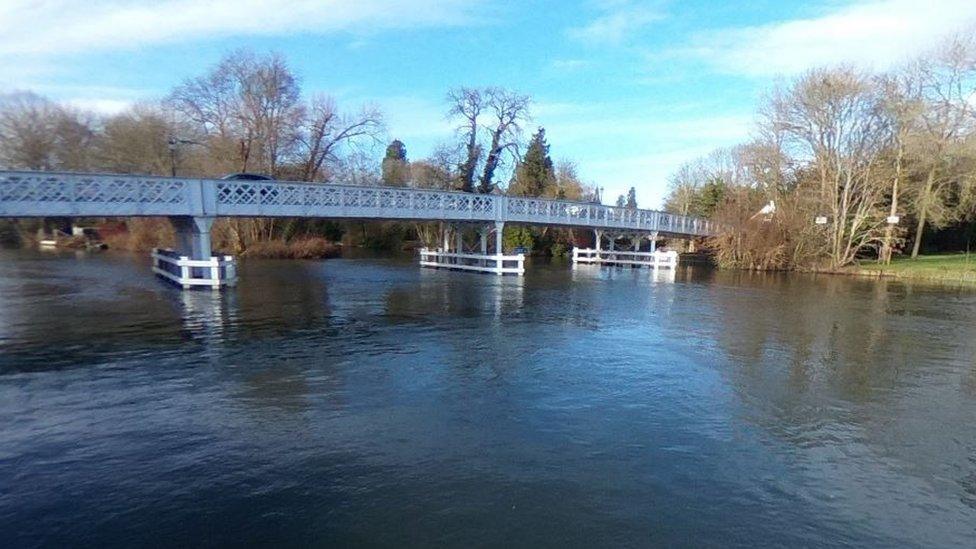New weir to be built below medieval Thames bridge
- Published

Fears had been raised about the impact of the new weir on nearby historic buildings
A weir below a medieval, Grade II listed bridge on the Thames is to be rebuilt amid fears it could fail.
Environment Agency officials warned there was a risk of flooding and boats running aground if the weir at Godstow Bridge in Oxfordshire was not replaced.
Oxford City Council has agreed work to replace the structure - built in 1937 - despite concerns over the impact on nearby historic buildings.
It is hoped building will be complete before the wetter winter months.
Environment Agency (EA) area lead Mark Hill told a meeting of the council's west area planning committee on Tuesday: "If it is not replaced it will fail, it could be this year it could be two or three years time, but it will happen."

The weir at Godstow is more than 80 years old
He warned if the weir failed in an open position, boats would not be able to navigate between Osney and Kings Lock, and vessels using permanent moorings would be stuck on the riverbed, the Local Democracy Reporting Service said.
The structure will be replaced with a concrete weir, with sluice gates 2m (6.5ft) further away from the bridge, and will include a fish pass and stairs.
Nick Leishman, also of the EA, said: "The gap opened up will allow people to see the bridge in a way they have not been able to see it in hundreds of years, certainly decades."
The listed building consent, which was unanimously agreed, had been called in by councillors amid concerns about potential harm to archaeological remains at Trout Island and the scheduled ancient monument of Godstow Abbey.

Follow BBC South on Facebook, external, Twitter, external, or Instagram, external. Send your story ideas to south.newsonline@bbc.co.uk, external.
Related topics
- Published22 May 2020

- Published1 March 2019
